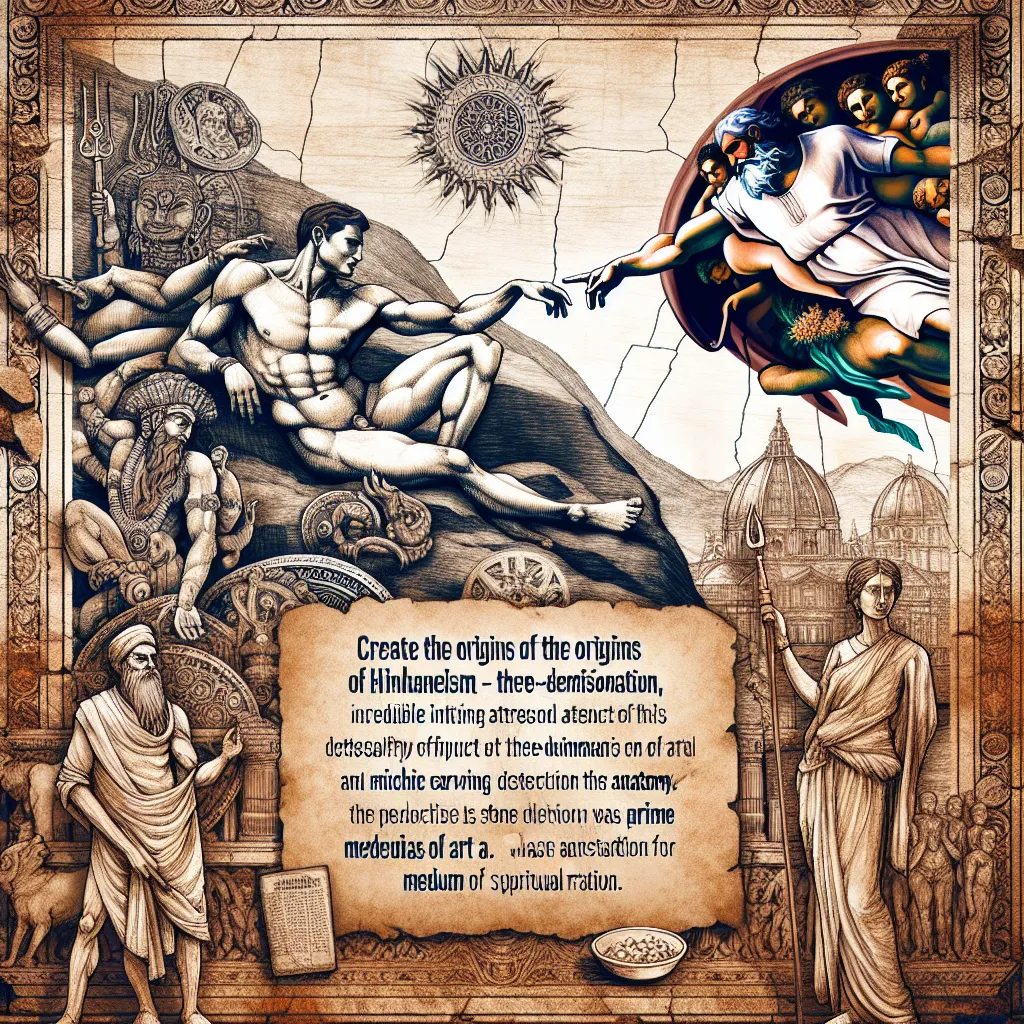
- Published on
- Authors

- Name
- You
Introduction
Hinduism, often lauded as the world's oldest living religion, encapsulates a profound spiritual journey that spans several millennia. It is rooted in an intricate blend of mythology, philosophy, and ritualistic practices that have evolved through the ages. This exploration delves into the historical origins of Hinduism, the key milestones in its development, and the fundamental texts and beliefs that form the bedrock of this ancient spiritual tradition.
The Historical Canvas
The Indus Valley Civilization
The earliest traces of what might be considered proto-Hindu practices are found in the Indus Valley Civilization (c. 3300 – 1300 BCE). This advanced urban culture, known for its sophisticated architecture and urban planning, left behind tantalizing clues in the form of seals, statues, and other artifacts.
| Artifacts | Significance |
|---|---|
| Seals depicting yogic postures | Suggest an early form of meditation and ritual practice. |
| Figurines of deities such as the "Great Mother" | Point towards fertility worship and nature deities. |
| Sacred tanks and baths | Indicate ritual purification practices akin to later Hindu rites. |
The Vedic Period
The next significant phase in the tapestry of Hinduism's history is the Vedic period (c. 1500 – 500 BCE). This era is characterized by the composition of the Vedas, a collection of hymns, prayers, and rituals dedicated to various deities. These texts were transmitted orally through generations before being written down.
Vedic Texts
| Text | Description |
|---|---|
| Rigveda | A collection of hymns praising the gods, considered the oldest of the Vedas. |
| Yajurveda | Contains prose mantras for ritual use. |
| Samaveda | Sacrificial chants. |
| Atharvaveda | A mix of hymns, spells, and incantations bridging early Vedic and later folk traditions. |
The Vedic corpus focuses on rituals (Yajna) and hymns (Mantras) to appease powerful deities like Indra, Agni, and Varuna, illustrating a cosmology deeply intertwined with ritualistic devotion and natural forces.
Evolution of Philosophical Thought
The Upanishads
As the Vedic period waned, a more introspective and philosophical discourse emerged in the form of the Upanishads (c. 800 – 400 BCE). These texts marked a paradigm shift from ritualistic practices to the contemplation of metaphysical concepts and the pursuit of spiritual knowledge.
| Concept | Explanation |
|---|---|
| Brahman | The ultimate, unchanging reality amidst and beyond the world. |
| Atman | The inner self or soul; realized as Brahman within. |
| Moksha | Liberation from the cycle of birth and rebirth (samsara), achieved through the realization of the unity of Atman and Brahman. |
The Epics and the Puranas
Alongside the Upanishads, the epics Mahabharata and Ramayana, and the extensive Puranas, provided a narrative dimension to Hinduism, embedding philosophical insights within stories of gods, heroes, and cosmic cycles.
Key Epics
| Epic | Significance |
|---|---|
| Mahabharata | Contains the Bhagavad Gita, a dialogue on duty, righteousness, and the nature of the self. |
| Ramayana | Chronicles the life of Prince Rama, exemplifying dharma (duty) and devotion. |
Conclusion
Hinduism’s historical origins are a rich confluence of ritual, mythology, and philosophy, formed over thousands of years. From the early practices of the Indus Valley to the sophisticated spiritual musings of the Upanishads, the journey of Hinduism is a testament to the evolving quest for understanding the divine, life, and the cosmos.
References
- "The Rigveda" by Wendy Doniger.
- "The Upanishads" translated by Eknath Easwaran.
- "A History of India" by Romila Thapar.
This dynamic exploration of the ancient spiritual tradition of Hinduism not only traces its historical roots but also illuminates its profound philosophical depths, blending the realms of advanced science and mystical wisdom.
